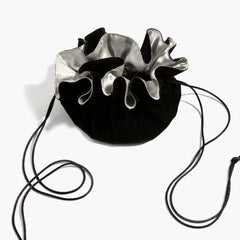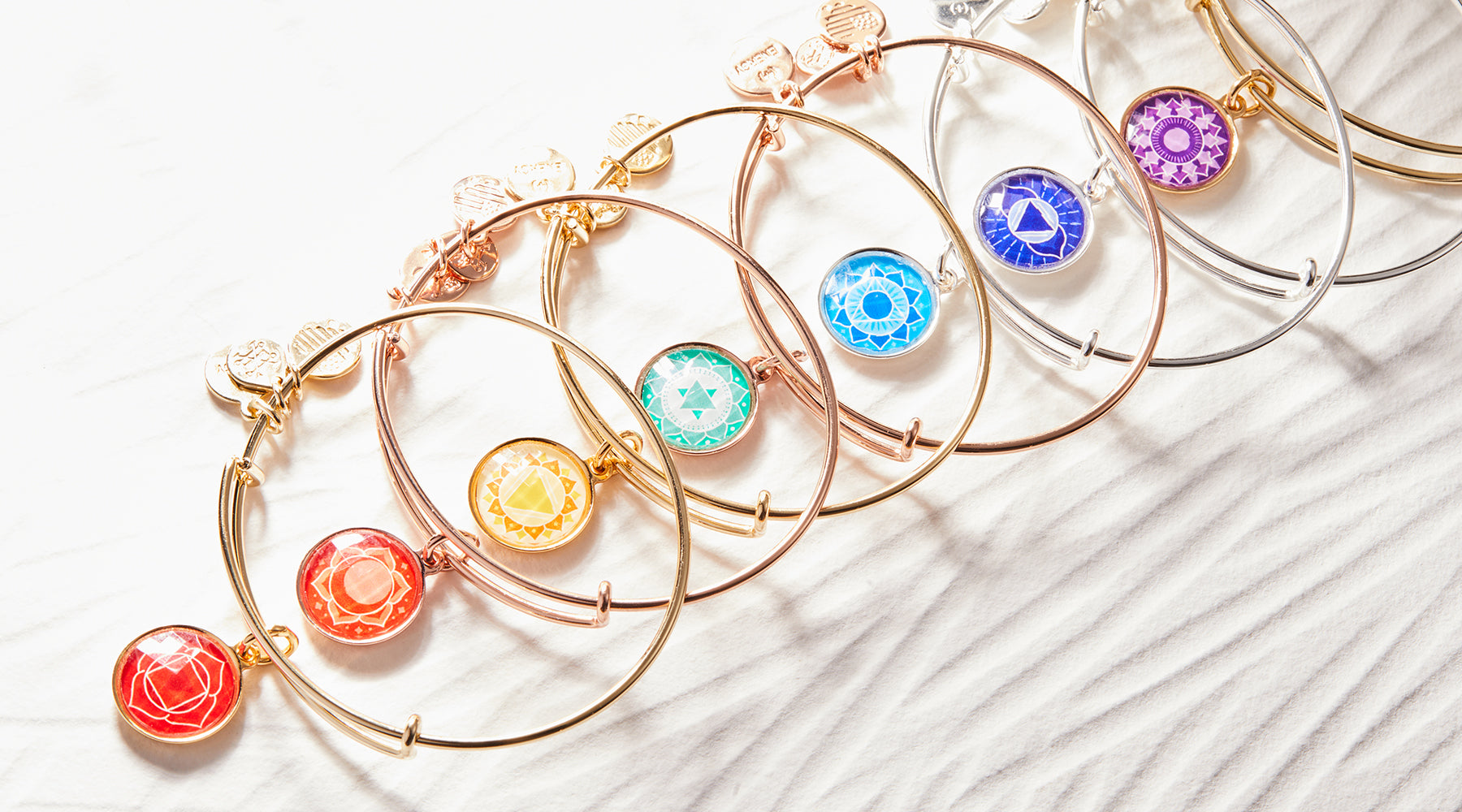Chakras are points of vital energy in the human body. We can’t always see them or feel them, but even if we don’t know it, we can sense them all the time — especially when our energy is off, and something doesn’t feel quite right in a certain place.
History of the Chakras
The main seven chakras are: The Crown, The Third Eye, The Throat, The Heart, The Solar Plexus, The Sacral, and The Root. They're located from your tailbone to the top of your head — which means The Root, while seemingly at the bottom, is actually the first if you're talking "order."
Chakra is the Sanskrit word for “wheel.” In this sense, chakras refer to wheels or discs that are really centers of energy in the body. The idea dates back as far as 1500 B.C.E., when chakras were first discussed in sacred Indian texts, the Vedas. Each main chakra corresponds to a specific spot in your body, but also to physical, emotional and spiritual energy associated with that place in your body.
The Three Regions
The first three — root, sacral and solar plexus — are the lower chakras, and concern earthly, physical matters. The middle chakra, the heart, connects your earthly self with your higher mind. Everything flows through the heart. The top three — throat, third eye and crown — are connected to higher consciousness, your spiritual self, and the metaphysical energy connecting you to the universe. Each chakra also has a symbolic and powerful color associated with it, corresponding to the colors of the rainbow.
The 7 Chakras + Their Colors

Their power isn't about how they exist on their own, it's about how they co-exist... together. When they're in complete alignment, chakras create a powerhouse — a literal force of nature. The thing is, when they're out-of-sync for any reason at all, so are you. If there's one thing (or chakra) off, it affects you entirely. So, what does all of this mean, and how do you get back in line? That's easy. Chakras are resilient, so it doesn't take too much to nourish them.
The Root Chakra

Also known as Muladhara, the first chakra, the root, is the center of stability and security. It grounds us and is the basis from which the rest of our lives are built. When this chakra is open and in balance, you’ll feel a deep sense of safety, and walk with confidence through this world.
The root chakra is associated with red, the color of power and fearlessness. Wear the red of this grounding chakra to plant your feet firmly on the earth and connect with your inner power.
How to know it's off: You find yourself extra anxious or feel generally unsafe and unsettled.
How to nourish it: Go outside, plant your feet firmly on the ground, breathe deeply -- and seek the wisdom of an older, trusted companion.
The Sacral Chakra
The Svadhisthana chakra is the center of our sexual energy, but also our creativity. Think about how, when you need to channel your deepest feelings or truest creative expression — whether that’s singing in your biggest voice or sharing your most sacred truth — you reach down inside and pull them from the bottom of you.
That’s you channeling your root chakra. When this chakra is open, your creativity and your feelings, the things you’re most passionate about, flow freely.
The sacral chakra is associated with orange, the color of joy, warmth and creativity. Wear vibrant orange and give yourself permission to share what you love with the world.
How to know it's off: You find yourself feeling easily overwhelmed, jealous, and uninspired.
How to nourish it: Let yourself have fun and speak "I Am" affirmations to bring to light your blessings.
The Solar Plexus Chakra
Our physical and energetic center, the Manipura chakra, is the place from which our truest self emanates. The solar plexus is where we keep all of our energy associated with our self-esteem and individual power.
Think about when you’re feeling off, like you’re not your best self: that feeling is concentrated in your middle, right? That’s you holding negativity in your solar plexus, projecting a lesser version of yourself to the world, and not letting your light shine.
The solar plexus is associated with yellow, the color of good cheer and happiness. When you’re honoring your inner self and letting yourself be seen for who you are, wear yellow as a reminder that you’re a unique and beautiful presence in this world.
How to know it's off: You find yourself distressed, easily agitated, or overtired.
How to nourish it: Laugh until your belly aches and get ample amounts of sunshine on your face.
The Heart Chakra

The heart chakra, Anahata, is the vital connection between your lower and higher chakras. Just like everything in your body is connected to your heart, pumping your blood through all your vital organs, your heart chakra allows your energies to flow.
This is the place in your body where love lives. When your energies are aligned, you are showing yourself the deepest kind of love, and you can give and receive that love freely.
The heart chakra is associated with the color green, the color of rebirth and renewal. Think about how everything in springtime is bursting with green. Wear that color to remember that love always needs tending to in order to be nurtured and to grow.
How to know it's off: You find yourself unable to let others in or hold healthy, long-lasting relationships.
How to nourish it: Open your soul to others or reconnect with friends or love lost.
The Throat Chakra
Also called the Vishuddha, the throat chakra is where our verbal expression comes from and is our center of communication.
Think about the times when you want to say something, but you hold back because you don’t feel like you can or should speak up. Your throat tightens, right? That’s an energetic blockage in your throat chakra.
If you speak your truth and let your voice be heard, your energy will flow. If you don’t feel like you can, try singing — not just a little, but really belting it out — to loosen that blockage and free up your energy.
The throat chakra is associated with the color blue, the color of calmness and serenity. If you’re letting yourself be heard, a feeling of inner calm will settle over you. Wear blue to channel that energy and remember that, even when you’re saying difficult things, you’ll feel better afterwards.
How to know it's off: You find yourself unable to speak your truth or stand up for yourself.
How to nourish it: Say what's on your mind... and sing!
The Third Eye

The Ajna chakra, our third eye, is located on your forehead. Our third eye is how we perceive unseen or unspoken things that we know are happening because we can sense them without seeing or hearing physical proof. When you’re using your spidey sense, that’s your third eye at work. Connecting with your third eye will help you hone your intuition, and honor what it’s telling you.
The third eye is associated with indigo, a spiritual color that represents wisdom. Wear this ethereal blue-purple, especially in powerful amethyst gemstones that amplify intuition, and remember to trust your inner voice.
How to know it's off: You find yourself being overly negative and can't seem to get out of your own way.
How to nourish it: Start a dream journal and surround yourself with positivity.
The Crown Chakra

The Sahasrara, the crown chakra, is at the very top of your head. Your crown is your connection to your higher mind, to your personal enlightenment and your sense of spirituality. Think about how many headaches come from spiritual malaise. That’s a blockage in your crown chakra, which wants to help you release that negativity and connect to the universe beyond your physical body.
The crown chakra is associated with violet, the color of divinity, which combines the calm stability of blue with the fierce power of red. Violet also represents mystery and magic, the ideas that there is more to life than just what we can see. Wear violet purple to connect yourself to the energies in the universe.
How to know it's off: You find yourself getting too caught up in the little, less meaningful moments and things.
How to nourish it: Meditate and start opening yourself to connect deeply with everyone and everything



